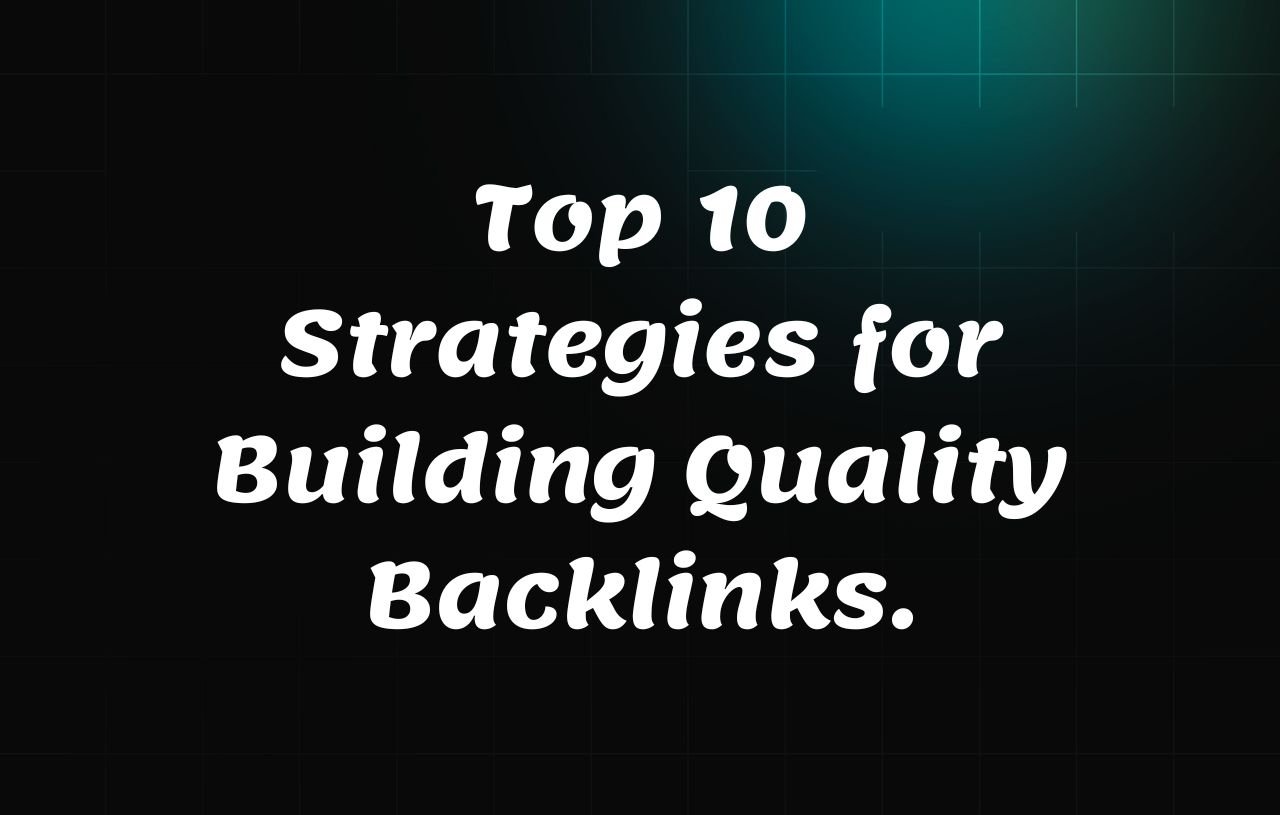Search Engine Optimization, or SEO, is the art and science of ensuring that your website not only appears in search engine results but also stands out in the crowd. At the heart of this endeavor lies the pivotal role of backlinks. These virtual pathways act as bridges connecting different corners of the internet, guiding search engine crawlers to your digital domain.
Not All Backlinks Are Created Equal
In the world of backlinks, it's crucial to understand that quantity does not always equate to quality. Not all backlinks are created equal, and their impact on your website's SEO can vary drastically. Quality is the secret sauce, and it's the essence of what distinguishes an authoritative, top-ranking website from one that languishes in obscurity.
Unveiling the Top 10 Strategies
In this article, we embark on an expedition through the terrain of backlinks, unveiling the Top 10 Strategies for Building Quality Backlinks that will empower your website to rise above the digital noise. These strategies are the compass and toolkit you need to navigate the intricacies of link-building, enhancing your website's visibility and authority.
Guest Blogging: Unlock the potential of guest posts on authoritative websites.
Broken Link Building: Salvage broken links and replace them with your valuable content.
Content Marketing: Craft content that becomes a magnet for high-quality backlinks.
Infographics and Visual Content: Harness the power of visuals to attract and engage.
Resource Link Building: Create valuable resources that others can't resist linking to.
Skyscraper Technique: Build upon existing content by creating something even more remarkable.
Influencer Outreach: Partner with industry influencers to earn their endorsement and backlinks.
Social Media Promotion: Leverage social platforms to amplify your content and reach.
Local SEO and Citations: Optimize for local search and secure valuable citations.
Competitor Analysis: Uncover the backlink strategies of your rivals and outshine them.
As we delve into each of these strategies, you'll gain actionable insights and a roadmap for cultivating high-quality backlinks that catapult your website to the top of search engine results. Let's embark on this journey to transform your website into an SEO powerhouse.
Guest Blogging: Unlocking the Pathway to Quality Backlinks
In the realm of digital marketing and SEO, guest blogging stands as one of the most versatile and potent tools in a marketer's arsenal. It's a strategy that, when executed effectively, can open doors to valuable backlinks, enhanced credibility, and a wider reach. But what exactly is guest blogging, and why is it a cornerstone of backlink building?
The Concept of Guest Blogging
Guest blogging, simply put, is the practice of writing and publishing articles or blog posts on websites that belong to others, rather than on your own site. It's a symbiotic relationship in the digital ecosystem. As a guest blogger, you contribute your expertise and content to another website's audience, and in return, you gain access to a new audience and the coveted backlink.
The Power of Relevance and Authority
When embarking on a guest blogging campaign, the cornerstone principle to abide by is relevance. It's imperative to choose websites and blogs that align with your niche or industry. This alignment ensures that your guest posts resonate with the existing audience and offer valuable insights, making it more likely for readers to engage with your content and follow your backlink.
Moreover, authority plays a pivotal role. Select websites with established authority and credibility within your niche or industry. Such websites not only provide you with a reputable platform but also deliver backlinks that carry more weight in the eyes of search engines. The combination of relevance and authority sets the stage for the most effective guest blogging campaigns.
Crafting High-Quality Guest Posts
Guest blogging isn't just about churning out content and scattering it across the internet. To secure valuable backlinks and make a lasting impact, your guest posts must be of the highest quality. Here are some tips to ensure your guest posts shine:
Thorough Research: Investigate the host website's audience, tone, and content style. Tailor your guest post accordingly.
Originality: Create unique content that offers fresh insights, data, or perspectives. Avoid duplicating content from your own blog.
Engaging Headlines: Craft attention-grabbing headlines that entice readers to click and explore further.
Valuable Content: Provide substantial value through well-researched, informative, and actionable content.
Natural Link Placement: Insert your backlink seamlessly within the content, ensuring it adds value rather than disrupts the flow.
Engage with the Audience: Respond to comments and questions promptly to foster engagement and build your online authority.
Guest blogging is a powerful strategy that not only yields quality backlinks but also fosters relationships within your industry. When executed with precision, it can become a cornerstone of your backlink-building efforts, propelling your website towards higher search engine rankings and increased online visibility.
The Art Of Turning Website Flaws Into Backlink Opportunities

The Broken Link Building Strategy
At its core, broken link building involves finding broken or dead links on authoritative websites within your niche and then reaching out to the website owner or manager to offer a replacement link – ideally, a link to your own content. This approach is a win-win: you help the website owner maintain the integrity of their site, and in return, you secure a valuable backlink.
Finding Broken Links On Authoritative Websites
1.The first step in broken link building is identifying the websites with broken links that you'd like to target. Here's how you can do it:
2.Utilize Online Tools: There are various online tools and extensions, such as Check My Links and Broken Link Checker, that can help you identify broken links on a webpage. Simply install one of these tools, visit authoritative websites within your niche, and run a scan.
3.Use Google Search Operators: Perform targeted Google searches using specific search operators like "site:[website URL] inurl:[keyword] intitle:[keyword]." This will help you find relevant pages on the website that might contain broken links.
Check Resource Pages: Resource pages, which often list helpful links for a particular topic, are gold mines for broken link building. Browse these pages and identify broken links.
The Outreach Approach and Sample Template
Once you've identified broken links on authoritative websites, the next crucial step is outreach. Your outreach should be polite, concise, and emphasize the value you bring. Here's a sample template:
Subject: Fixing Broken Links on [Website Name]
Hi [Website Owner's Name],
I hope this email finds you well. I recently visited your website, [Website Name], and was impressed by the wealth of valuable resources you've curated for [Niche/Topic].
During my visit, I noticed a few broken links on your [Specific Page/Resource Page] related to [Topic]. Broken links can negatively impact user experience and the overall quality of your website.
I wanted to help by suggesting a replacement link to a relevant and up-to-date resource. I have a piece of content on my website that I believe would be a valuable addition to the page. You can find it here: [Your Content URL].
If you'd like, I can provide the HTML code for easy implementation.
Thank you for your time, and I look forward to hearing from you.
Best regards, [Your Name]
Broken link building requires patience and persistence, but it can yield high-quality backlinks from authoritative websites that boost your SEO efforts significantly. It's an excellent example of how turning website flaws into opportunities can be mutually beneficial for both website owners and SEO practitioners.
Content Marketing: The Backbone of Backlink Attraction

The Role of High-Quality, Shareable Content
Quality is the cornerstone of content marketing. Content that resonates with your target audience, offers unique insights, and adds value to their lives is more likely to be shared and linked to by others. Whether it's a well-researched blog post, a comprehensive guide, an informative infographic, or a captivating video, creating content that stands out is your key to success.
How Valuable Content Attracts Backlinks Naturally
The relationship between valuable content and backlinks is symbiotic. When you produce content that is informative, authoritative, and engaging, you naturally encourage others to reference and link to it. Here's how it works:
Credibility and Authority: High-quality content positions you as an industry authority, making others more inclined to cite your content as a source of valuable information.
Link-Worthy Resources: When you create comprehensive resources, others are more likely to link to them as references, enhancing the credibility of their own content.
Social Sharing: Shareable content is more likely to be distributed on social media platforms, expanding its reach and increasing the chances of it being discovered by websites looking to link to authoritative sources.
Tips for Optimizing Content for Link Building
To maximize the backlink potential of your content, consider the following tips:
In-Depth Research: Prioritize thorough research to ensure your content is accurate, up-to-date, and comprehensive.
Unique Angle: Approach topics from a unique angle or offer fresh insights that set your content apart.
Visual Elements: Incorporate visuals like infographics, images, and videos to make your content more engaging and shareable.
Internal Linking: Strategically include internal links to relevant pages on your website to encourage exploration and longer sessions.
Outreach: Proactively reach out to industry influencers, bloggers, and websites that might find your content valuable and ask for backlinks.
Content Updates: Periodically update and refresh your content to keep it relevant and maintain its link-building potential.
Guest Posting: When guest blogging, link to your own high-quality content as a reference within your guest posts.
In the realm of SEO and backlink building, content is your most powerful weapon. By consistently creating exceptional content, you not only provide value to your audience but also create the ideal conditions for natural backlink attraction. Remember, the more you invest in crafting top-notch content, the more likely it is that others will invest in linking to it.
Infographics and Visual Content
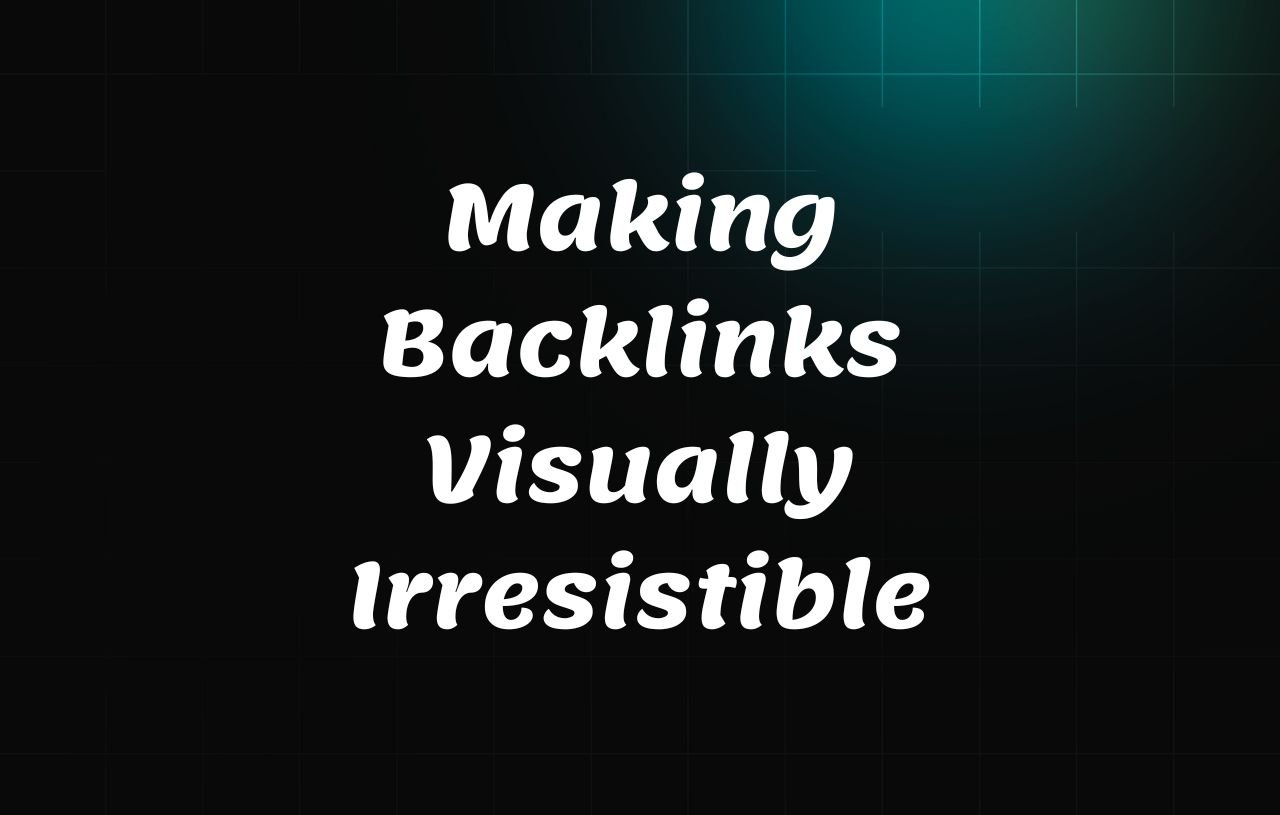
In a world where attention spans are dwindling, and information overload is the norm, infographics and visual content have emerged as powerful tools for backlink building. In this section, we'll explore why infographics and visual content are so effective, how to craft visually shareable content, and strategies for promoting and securing backlinks through your visual creations.
The Effectiveness of Infographics and Visual Content
Infographics and visual content have a unique ability to distill complex information into a visually appealing and easily digestible format. Here's why they are so effective:
Engagement: Visual content is inherently engaging and captures the viewer's attention more effectively than text alone.
Simplified Communication: Infographics simplify complex concepts, making them accessible to a broader audience.
Shareability: People are more likely to share visually appealing content on social media and other platforms, amplifying its reach.
Link-Worthy: Websites and blogs often link to infographics and visual content as valuable resources, enriching their own content.
Creating Shareable Visual Content
Crafting shareable visual content requires careful planning and execution:
Choose a Relevant Topic: Select a topic that resonates with your target audience and fits your niche.
Data and Information: Collect accurate and compelling data or information to convey through visuals.
Design and Layout: Invest in professional design or use user-friendly tools like Canva to create visually appealing and coherent designs.
Clarity: Ensure that your visual content is clear, concise, and easy to understand.
Branding: Incorporate your brand elements, such as logos and color schemes, for brand recognition.
Cite Sources: Include citations and references for the data used in your infographics.
Outreach and Promotion Strategies for Visual Content
Once your visual content is ready, it's time to maximize its potential for backlinks:
Share on Visual Platforms: Post your infographics on visual platforms like Pinterest, Instagram, and infographic-specific directories.
Social Media Sharing: Share your visual content on social media channels and groups relevant to your niche.
Email Outreach: Contact bloggers and websites in your industry, offering your infographic as a valuable resource for their audience.
Embed Codes: Provide an embed code along with your visual content so that others can easily share it on their websites.
Infographic Directories: Submit your infographics to infographic directories and sharing platforms.
Guest Posts: Include your infographic within guest posts on authoritative websites and link back to your site.
Content Roundups: Look for content roundups in your niche and submit your visual content for consideration.
Incorporating infographics and visual content into your backlink building strategy can be a game-changer. These visually stimulating assets not only enhance user engagement but also serve as link magnets that draw attention from websites looking to enrich their content with compelling visuals and data-driven insights.
Resource Link Building

Resource link building is a strategic approach that involves creating valuable and comprehensive resources on your website, with the goal of attracting backlinks from other websites within your niche or industry. In this section, we'll define resource link building, walk through the process of crafting these valuable resources, and provide insights on outreach and promotion to turn your resource pages into backlink goldmines.
Defining Resource Link Building
Resource link building revolves around creating content assets that serve as go-to references for your target audience. These resources could be in the form of guides, tutorials, templates, checklists, or any content that provides substantial value. Websites and bloggers in your niche are more likely to link to your resource pages when they find them informative, relevant, and helpful.
Creating Valuable Resources
The process of crafting resources that attract backlinks involves several key steps:
Identify a Need: Conduct thorough research to identify gaps or needs within your niche. What kind of information or tools is your target audience seeking?
Comprehensive Content: Create content that is comprehensive, well-researched, and addresses the identified need effectively. This content should be the most informative and valuable on the topic.
Visual Enhancements: Incorporate visuals, such as images, charts, and infographics, to enhance the appeal and clarity of your resource.
User-Friendly Design: Ensure that your resource is easy to navigate, with clear headings, subheadings, and a logical structure.
Regular Updates: Commit to keeping your resource up-to-date with the latest information and trends in your industry.
Multimedia: Consider adding multimedia elements, such as videos or interactive tools, to make your resource even more engaging.
Outreach and Promotion for Resource Pages
Once your resource is ready, the next step is to promote it and encourage others to link to it:
Email Outreach: Reach out to bloggers, website owners, and influencers in your niche. Let them know about your valuable resource and how it can benefit their audience.
Social Media Promotion: Share your resource on social media platforms and within relevant groups or communities. Encourage sharing to increase its visibility.
Content Roundups: Look for content roundups in your industry and submit your resource for inclusion.
Guest Posting: When you write guest posts for other websites, reference and link to your resource as a valuable reference.
Collaborations: Consider collaborating with influencers or experts in your field to co-promote the resource.
Incorporate It in Your Content: Reference your resource within your blog posts, articles, and other content on your website.
Resource link building is a long-term strategy that can yield a steady stream of high-quality backlinks when executed effectively. By providing valuable resources that meet the needs of your target audience, and actively promoting them within your industry, you can position your website as a valuable hub of information, attracting links from other websites seeking to enrich their content.
Skyscraper Technique

The Skyscraper Technique is a tried-and-true method for creating content that not only stands out but also attracts high-quality backlinks naturally. In this section, we'll delve into what the Skyscraper Technique entails, how to uncover link-worthy content in your niche, and the outreach process, complete with a template to get you started.
Understanding the Skyscraper Technique
Coined by Brian Dean of Backlinko, the Skyscraper Technique is a process that involves three key steps:
Discover Existing Content: Start by identifying popular and link-worthy content within your niche or industry. Look for articles, blog posts, or resources that have garnered a significant number of backlinks.
Create Something Better: Your goal is not to copy but to outdo the existing content. Create a piece of content that is more comprehensive, up-to-date, and valuable. It should be the go-to resource on the topic.
Outreach: Once your improved content is live, reach out to websites and individuals who have linked to the original content. Inform them about your superior resource and ask if they would consider linking to your updated version.
Finding Link-Worthy Content
To execute the Skyscraper Technique effectively, you need to locate content in your niche that is ripe for improvement and link attraction:
Use Tools: Utilize SEO tools like Ahrefs or SEMrush to identify top-performing content in your niche based on backlinks, shares, and traffic.
Google Search: Conduct Google searches using relevant keywords and phrases in your niche. Look for articles or resources with high rankings and backlinks.
Competitor Analysis:
Analyze the content strategies of your competitors to identify topics and articles that have gained them backlinks.
The Outreach Process and Template
Outreach is a critical component of the Skyscraper Technique. Here's a step-by-step guide and a sample template for reaching out to potential link sources:
Step 1: Identify Targets
- Use your chosen SEO tool to find websites that have linked to the original content you improved upon.
- Compile a list of potential targets for your outreach.
Step 2: Craft Outreach Emails
- Subject: Enhancing [Their Content Title] with Valuable Updates
- Hi [Recipient's Name],
I hope this message finds you well. I recently came across your excellent piece of content, "[Their Content Title]." It's evident that you've created a valuable resource that has been appreciated by many.
I wanted to reach out and share an even more comprehensive and up-to-date resource on the same topic. I've recently published a piece titled "[Your Content Title]" that includes [mention the additional value your content provides]. I believe it would be a valuable addition to your page.
Would you consider taking a look at it? If you find it valuable, I'd be thrilled if you could include it as a resource on your page. Here's the link to the new content: [Your Content URL].
Thank you for your time, and I look forward to hearing from you.
Best regards, [Your Name]
The Skyscraper Technique, when executed diligently, can yield remarkable results by not only improving your content but also attracting authoritative backlinks naturally. It's a testament to the power of creating content that genuinely adds value within your niche.
Influencer Outreach
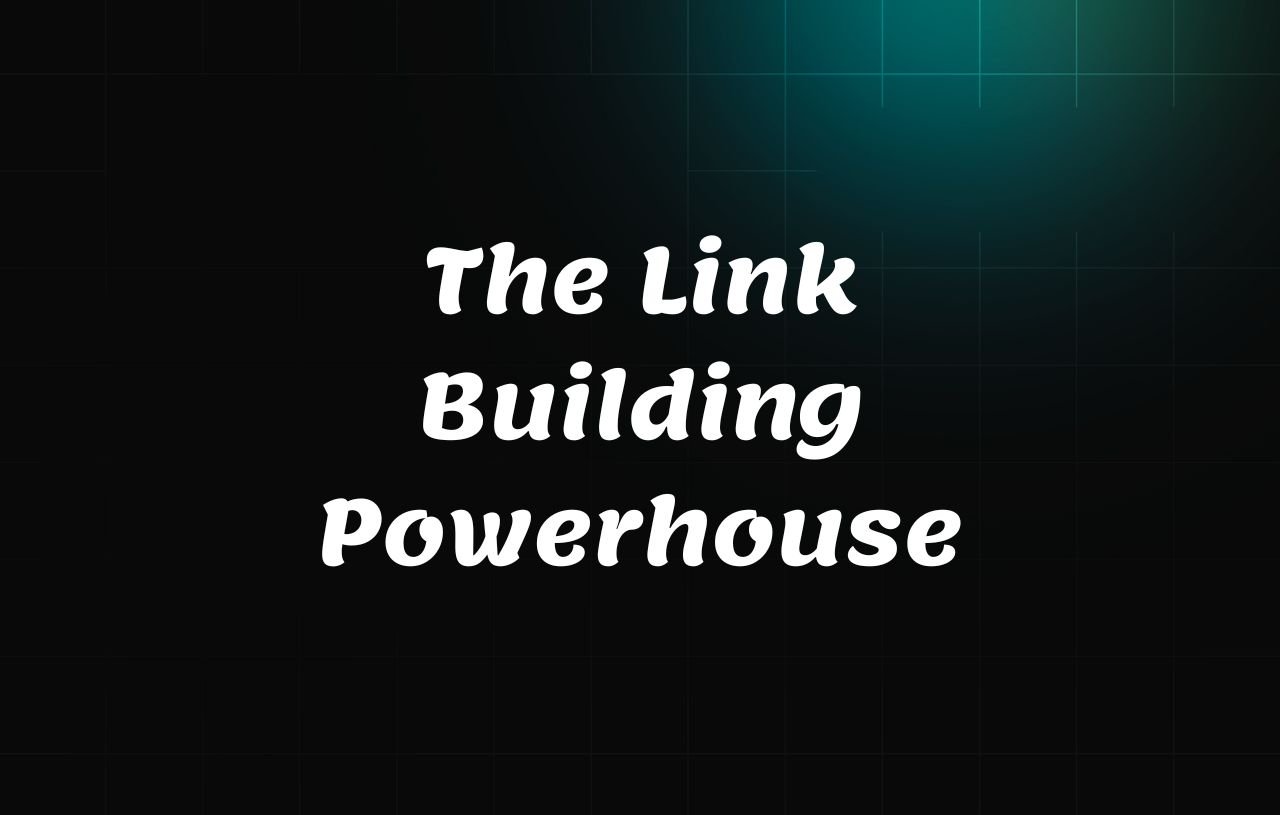
In the realm of backlink building, few strategies pack as much punch as influencer outreach. Leveraging the reach and authority of influencers in your niche can result in a cascade of high-quality backlinks and heightened online visibility. In this section, we'll explore the formidable influence of influencer marketing on link building, the art of identifying and approaching influencers, and tips for fostering genuine relationships in your niche.
The Power of Influencer Marketing for Link Building
Influencers are digital thought leaders, tastemakers, and experts in specific niches or industries. Their endorsement carries significant weight and credibility. Here's why influencer marketing is a potent force in link building:
Authority and Trust: Influencers are seen as trustworthy sources of information. Backlinks from their endorsements signal to search engines that your content is authoritative.
Amplified Reach: Influencers have substantial followings on social media and other platforms. When they share or link to your content, it reaches a broader and more engaged audience.
Quality Over Quantity: Influencers tend to prioritize quality over quantity, so the backlinks you receive are often from high-authority websites.
Identifying and Approaching Influencers
Identifying and approaching influencers in your niche requires a systematic approach:
Define Your Niche: Clearly define your niche or industry to pinpoint the relevant influencers. This ensures that their audience aligns with your target audience.
Use Social Media: Platforms like Instagram, Twitter, LinkedIn, and YouTube are goldmines for finding influencers. Search for hashtags and keywords related to your niche.
Google Search: Perform Google searches for authoritative bloggers, experts, or thought leaders in your field.
Influencer Tools: Consider using influencer discovery tools like BuzzSumo or Followerwonk to find potential influencers and analyze their influence.
Engage and Follow: Follow, engage with, and share content from potential influencers to build a rapport before reaching out.
Building Genuine Relationships with Influencers
The key to successful influencer outreach lies in cultivating genuine relationships. Here are some tips:
Personalize Your Outreach: Craft personalized messages that highlight why you admire their work and how your content aligns with their interests.
Offer Value First: Provide something of value to the influencer, such as sharing their content or collaborating on a project, before asking for backlinks.
Be Genuine and Respectful: Be authentic in your interactions and respectful of their time and boundaries.
Collaborate Creatively: Propose creative collaboration ideas, such as guest posts, interviews, or joint projects, that benefit both parties.
Express Gratitude: Always express gratitude for any support or collaboration, and nurture the relationship beyond a single interaction.
Influencer outreach is a potent strategy for acquiring high-quality backlinks and enhancing your website's authority. By identifying and approaching influencers strategically and fostering genuine, mutually beneficial relationships, you can unlock the tremendous potential of influencer marketing in your link-building endeavors.
Social Media Promotion
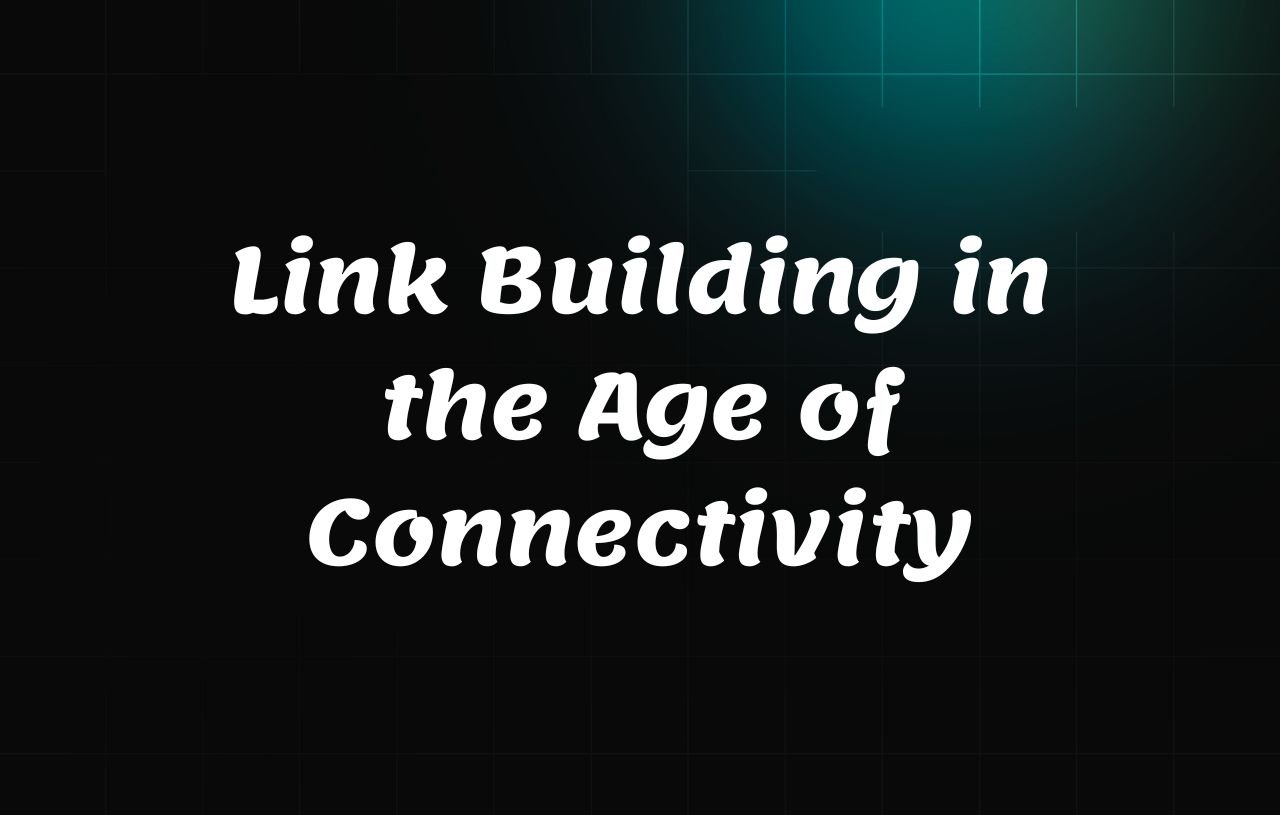
In the digital landscape, where connectivity reigns supreme, social media has emerged as a formidable ally in the quest for backlinks. It's not just a platform for sharing memes and cat videos; it's a dynamic tool for promoting your content and fostering valuable link-building opportunities. In this section, we'll explore the indispensable role of social media in link building, strategies for effective content promotion on social platforms, and the pivotal importance of engaging with your audience.
Local SEO and Citations
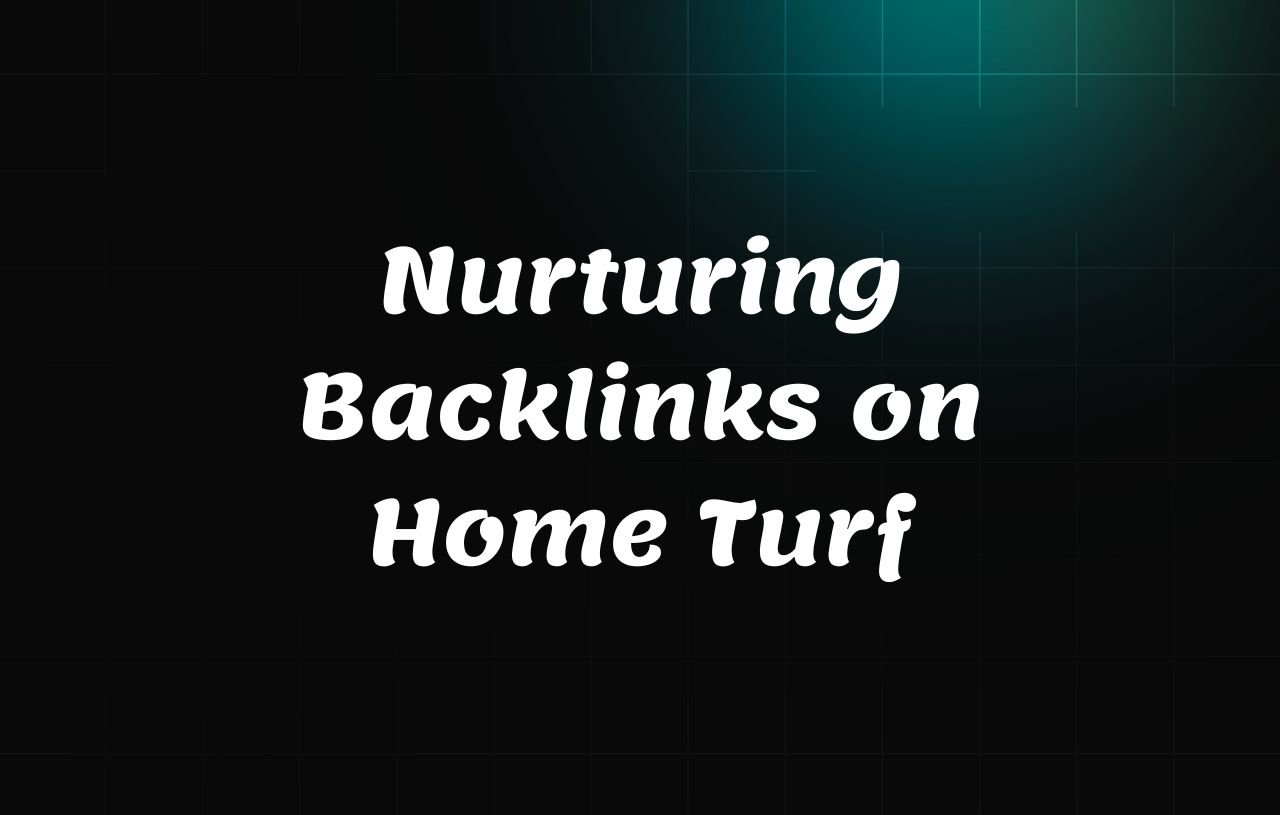
Local SEO is a dynamic field that not only enhances your website's visibility in local searches but also plays a significant role in link building. In this section, we'll explore the vital role of local SEO in your link-building strategy, the process of obtaining local citations, and tips for optimizing your Google My Business listing.
The Significance of Local SEO for Link Building
Local SEO is the art of optimizing your online presence to attract local customers and improve your website's rankings in local search results. While it primarily focuses on local visibility, it can be a powerful tool for link building because it often involves local directories, websites, and businesses referencing your website.
One of the key components of local SEO is building local citations, which are online mentions of your business's name, address, and phone number (NAP) on various websites and directories. These citations not only boost your local rankings but also provide valuable backlinks to your website.
Obtaining Local Citations
Here's how you can obtain local citations:
Local Directories: Submit your business information to reputable local directories such as Yelp, Yellow Pages, and TripAdvisor. Ensure your NAP details are consistent across all platforms.
Google My Business: Claim and optimize your Google My Business listing. This not only improves your local visibility but also provides a valuable backlink from Google.
Local Partnerships: Collaborate with local organizations, chambers of commerce, or industry associations that may include your business information on their websites.
Local News and Blogs: Engage with local news websites and blogs by providing newsworthy content or contributing guest posts that mention your business.
Customer Reviews: Encourage satisfied customers to leave reviews on platforms like Google My Business and Yelp, which can include your business information.
Optimizing Your Google My Business Listing
Optimizing your Google My Business (GMB) listing is crucial for local SEO and link building. Here are some tips:
Complete Your Profile: Ensure your GMB profile is fully filled out with accurate NAP information, business hours, photos, and a detailed description.
Categories and Attributes: Select relevant categories and attributes that describe your business accurately.
Customer Reviews: Encourage customers to leave reviews, and respond to reviews promptly, showing your engagement with the community.
Post Regular Updates: Utilize the GMB Posts feature to share updates, promotions, and events to keep your listing fresh and engaging.
Use Q&A: Address frequently asked questions in the Q&A section to provide helpful information.
By optimizing your Google My Business listing and actively seeking local citations, you not only improve your local SEO but also secure valuable backlinks from reputable local sources, enhancing your website's authority and visibility.
Competitor Analysis

Competitor analysis is an invaluable tool in the realm of backlink building. It allows you to dissect your competitors' strategies, identify their successful backlinks, and leverage this knowledge to enhance your own link-building efforts. In this section, we'll explore the importance of analyzing competitors' backlinks, how to identify and replicate them, and tips for improving upon your competitors' strategies.
The Importance of Analyzing Competitors’ Backlinks
Competitors can provide a wealth of insights into effective backlink building strategies. By understanding which websites are linking to your competitors and why, you can uncover opportunities to secure similar backlinks, identify gaps in your own strategy, and refine your approach.
Identifying and Replicating Competitor Backlinks
Here's how you can identify and replicate competitor backlinks:
Competitor Analysis Tools: Utilize SEO tools like Ahrefs, Moz, or SEMrush to identify your competitors' backlinks. Enter your competitor's URL to view their backlink profile.
Filter and Analyze: Filter the backlinks to focus on high-quality and relevant ones. Analyze the context in which these backlinks were obtained and the content that attracted them.
Outreach: Reach out to the same websites that linked to your competitors. Highlight your own relevant and valuable content that could be linked to as well.
Improve Content: Enhance the content on your website to make it even more valuable and engaging than that of your competitors.
Tips for Improving Upon Competitors’ Strategies
To outperform your competitors in the realm of backlink building, consider the following tips:
Enhance Content Quality: Invest in creating content that surpasses that of your competitors in terms of depth, accuracy, and engagement.
Leverage Your Unique Value: Identify what sets your business apart and leverage these unique selling points to attract backlinks.
Diversify Anchor Text: Use a variety of anchor text to make your backlink profile appear natural and diverse.
Track and Monitor: Continuously monitor your competitors' backlinks and adapt your strategy based on their successes and shortcomings.
Quality Over Quantity: Focus on acquiring high-quality, authoritative backlinks rather than simply trying to match your competitors' numbers.
Competitor analysis is an ongoing process that can provide valuable insights to fine-tune your backlink-building strategy. By learning from your competitors and continually improving your own tactics, you can gain a competitive edge and secure high-quality backlinks that drive your website's success.
Conclusion: Elevate Your Website’s SEO with Quality Backlinks
In the ever-evolving landscape of SEO, one thing remains constant: the significance of quality backlinks. We've journeyed through ten potent backlink building strategies, each offering its own unique approach to enhancing your website's authority and visibility. But amidst the diversity of tactics, a central theme emerges—quality over quantity.
Remember, it's not about amassing a vast number of backlinks; it's about cultivating relationships, providing value, and creating content that naturally attracts authoritative references. Whether it's through guest blogging, broken link building, influencer outreach, or local SEO, the common thread is the pursuit of excellence.
As you embark on your backlink building journey, keep in mind that patience and persistence are your allies. Start implementing these strategies, adapt them to your niche, and always prioritize quality. By doing so, you'll not only boost your website's SEO but also establish a digital presence that stands the test of time. So, roll up your sleeves and begin crafting those high-quality backlinks—it's your path to SEO success.
